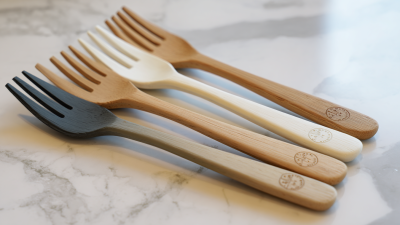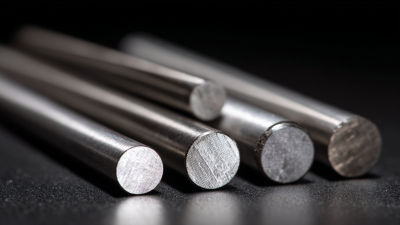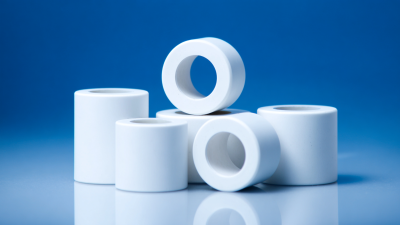Unlocking Efficiency: How Vacuum End Effectors Revolutionize Robotics and Automation
Table of Contents
- Understanding the Basics of Vacuum End Effectors in Robotics
- The Advantages of Using Vacuum Technology in Automation Processes
- Exploring Applications of Vacuum End Effectors Across Different Industries
- Comparative Analysis: Vacuum End Effectors vs. Traditional Gripping Methods
- Future Trends: Innovations in Vacuum Technology for Robotics and Automation
- FAQS
- Conclusion
- Related Posts
The advent of Vacuum End Effectors has brought a transformative shift in the domain of robotics and automation, setting a new standard for efficiency and precision. According to a recent industry report by MarketsandMarkets, the global robotics market is expected to reach $210 billion by 2025, driven significantly by advancements in automation technologies. Within this context, Vacuum End Effectors play a crucial role, enhancing the capabilities of robotic systems to handle a variety of materials and shapes with unmatched precision. As a private high-tech enterprise, St.Cera Co., Ltd. stands at the forefront of this evolution, leveraging our expertise in precision ceramic manufacturing to develop innovative solutions that integrate seamlessly with these advanced technologies. By focusing on research and development, we aim to create high-performance Vacuum End Effectors that can meet the stringent demands of modern automation, positioning our clients for success in an increasingly competitive landscape.

Understanding the Basics of Vacuum End Effectors in Robotics
Vacuum end effectors are crucial components in the realm of robotics, especially when it comes to automating tasks that require precision and efficiency. These devices utilize vacuum suction to grasp and manipulate a wide variety of objects, ranging from fragile items like glass to heavy components in industrial settings. Understanding the fundamentals of vacuum end effectors is essential for those entering the field of robotics, as they play a significant role in enhancing operational efficiency and safety. Their design must accommodate different shapes and weights, ensuring that robots can handle diverse tasks effectively.
As educational initiatives increasingly integrate robotics and automation into their curricula, grasping these basic concepts becomes vital for students and professionals alike. In regions where technology is reshaping learning environments, like rural Gujarat, the introduction of robotics and coding into schools signifies a shift towards equipping the next generation with practical skills that are essential for future careers. Learning how vacuum end effectors function, alongside other robotic technologies, allows individuals to unlock their potential in a rapidly evolving job market.
The Advantages of Using Vacuum Technology in Automation Processes
Vacuum technology has emerged as a game-changer in automation processes by offering unparalleled efficiency and versatility. One significant advantage is its ability to handle a wide range of materials with different shapes, sizes, and surface textures. This adaptability makes vacuum end effectors suitable for diverse applications, from delicate glass components to heavy industrial parts. Their non-contact gripping method reduces the risk of damage, ensuring that sensitive items remain intact during handling and transportation.
Another compelling benefit of vacuum technology is its speed and precision. The capability to quickly and reliably grasp and release items enhances the productivity of automated systems. By minimizing cycle times and increasing throughput, vacuum end effectors contribute to a more streamlined production process. Moreover, the integration of sensors with these systems allows for real-time adjustments, ensuring that operations remain efficient even in dynamic manufacturing environments. Overall, the incorporation of vacuum technology in automation not only optimizes operational performance but also supports innovation across various industries.

Exploring Applications of Vacuum End Effectors Across Different Industries
Vacuum end effectors have emerged as a transformative technology in various industries, streamlining processes and enhancing productivity. In manufacturing, these devices are integral in automating assembly lines. They efficiently handle delicate components, reducing the risk of damage compared to traditional mechanical grasping systems. For instance, in the automotive sector, vacuum end effectors are utilized to lift and position intricate parts, enabling faster assembly times and higher accuracy, which ultimately leads to cost reductions.

Beyond manufacturing, vacuum end effectors are making significant strides in logistics and warehousing. Their ability to securely hold and transport different materials—ranging from boxes to fragile items—has revolutionized the way goods are handled. Companies are adopting these solutions to optimize their supply chain operations, minimizing human intervention and maximizing speed. In the food industry, vacuum end effectors ensure hygiene and safety while handling products, thus adhering to strict regulatory standards. The diverse applications across these sectors illustrate how vacuum end effectors not only enhance efficiency but also contribute to the overall safety and reliability of automated systems.
Comparative Analysis: Vacuum End Effectors vs. Traditional Gripping Methods
Vacuum end effectors have emerged as a game-changing technology in the field of robotics and automation, offering significant advantages over traditional gripping methods. Traditional grippers often rely on mechanical force to grasp objects, which can lead to damage, slippage, or inconsistent handling, especially with fragile or irregularly shaped items. In contrast, vacuum end effectors use suction to securely hold a wide variety of materials without the risk of crushing or marring surfaces, making them ideal for applications in manufacturing, packaging, and logistics.
Moreover, the flexibility and adaptability of vacuum end effectors cannot be overstated. Unlike mechanical grippers, which may require customization for different shapes and sizes, vacuum systems can easily adjust to varying workload demands through the use of specialized suction cups and adjustable pressure settings. This adaptability allows automation systems to seamlessly handle diverse product ranges without necessitating extensive retooling or downtime. As industries continue to embrace automation, the comparative benefits of vacuum end effectors are positioning them as the preferred choice for enhancing both efficiency and reliability in robotic applications.
Future Trends: Innovations in Vacuum Technology for Robotics and Automation
The rapid advancement in vacuum technology is poised to significantly impact the fields of robotics and automation, with increasing market values reflecting this growth. The vacuum coating machine market is projected to reach $445.4 million in 2024, nearly doubling to $887 million by 2032, demonstrating a compound annual growth rate of 8.9%. This surge highlights the expanding role of vacuum systems in enhancing operational efficiency and product precision across various applications.
As businesses adopt innovative vacuum end effectors, they can streamline processes, reducing waste while improving output quality.
Moreover, as artificial intelligence continues to integrate into robotic systems, the global AI robot market is expected to grow from $52.3 billion in 2024 to $322.6 billion by 2032, driven by advancements in automation technologies. Backyard automation is also gaining traction, with robotic lawn mowers and pool cleaners becoming increasingly popular. This trend signifies a move towards smarter and more convenient home solutions, enabling users to delegate routine tasks to advanced robotics, thereby freeing up personal time and enhancing overall lifestyle quality. As these technologies evolve, their efficiency and application in daily life will revolutionize our interaction with automation.
FAQS
: The primary advantages include handling a wide range of materials with various shapes and sizes, non-contact gripping that reduces damage, speed and precision in operations, and the ability to adapt to dynamic manufacturing environments through real-time adjustments.
Vacuum end effectors utilize suction to hold objects securely, minimizing the risk of damage and slippage, while traditional grippers often rely on mechanical force that can cause issues with fragile or irregularly shaped items.
Vacuum end effectors are particularly beneficial in manufacturing, packaging, and logistics, where they can handle delicate components as well as heavy industrial parts effectively.
Sensors allow for real-time adjustments to vacuum systems, enhancing efficiency and adapting to various workload demands in dynamic manufacturing settings.
Yes, vacuum end effectors are highly adaptable and can handle diverse product ranges without significant retooling or downtime, using specialized suction cups and adjustable pressure settings.
By minimizing cycle times and increasing throughput, vacuum end effectors enhance overall productivity and streamline the production process.
Their flexibility, adaptability, and reduced risk of damage make them a preferred choice for enhancing both efficiency and reliability in robotic applications.
The incorporation of vacuum technology optimizes operational performance by increasing efficiency, reducing handling errors, and supporting innovation across various industries.
Yes, the non-contact gripping method of vacuum systems significantly reduces the risk of damaging sensitive items during handling and transportation.
While there may be initial setup costs, the adaptability and efficiency gained from using vacuum end effectors can lead to long-term cost savings by reducing downtime and improving productivity.
Conclusion
The article "Unlocking Efficiency: How Vacuum End Effectors Revolutionize Robotics and Automation" delves into the transformative role of Vacuum End Effectors in enhancing efficiency within various automation processes. It begins by explaining the fundamental principles of vacuum technology in robotics, highlighting its advantages such as increased reliability and precision over traditional gripping methods. The discussion extends to diverse applications across industries, showcasing how Vacuum End Effectors have become indispensable tools in manufacturing and logistics.
Furthermore, the article conducts a comparative analysis between Vacuum End Effectors and conventional gripping mechanisms, emphasizing the former's superior adaptability and safety. Looking ahead, it explores promising innovations in vacuum technology that are set to further revolutionize robotics and automation, offering new opportunities for companies like St.Cera Co., Ltd., which specializes in precision ceramic manufacturing and can leverage these advancements to enhance their operational capabilities and product offerings.
Related Posts
-

How to Choose the Best Alumina Ceramic Fork for Your Kitchen Needs
-

Exploring the Demand Surge for ESD Ceramic Forks at the 2025 China Import and Export Fair
-

7 Best Ceramic Lift Pins for Enhanced Performance in Manufacturing
-

The Future of Innovative Ceramic Cylinder Solutions for Global Trade
-

Choosing the Right Manufacturer for the Best Ceramic Guide Pin: Essential Solutions and Tips
-

Innovative Use Cases for Silicon Nitride Ceramic Sleeve in Modern Applications
Blog Tags:

